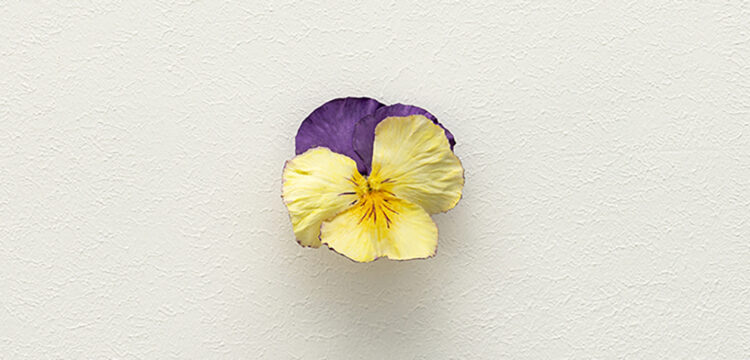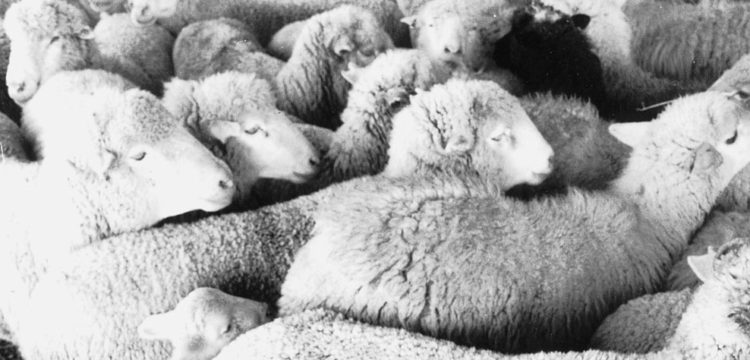Rural Return
A scenario of future landscapes between rural and sci-fi
The work of the Czech sculptor Anna Hulačová, is characterized by a multiplicity of cultural and historical-artistic references. The pieces presented at her exhibition Alienbees, save us, please! at Arsenał (Białystok, Poland) contain allusions to Greek mythology, science-fiction iconography, Modernism in architecture, Surrealism and Soc-realism, and are based on numerous dualisms: utopia vs. dystopia, the past vs. the future, human vs. machine, individuality vs. collectivity, organicity vs. technology, fluidity vs. solidity, and finally, life vs. death.
Throughout her recent sculptural work Czech artist Anna Hulačová follows up on her explorations between past and near-future landscapes, in relation to the ecological and agricultural crisis, conveying a message on irretrievable environmental changes and unexpected ways in which nature can become “alien” and leave us bewildered.
In her earlier research, Czech artist Anna Hulačová was led by her interest in folk traditions and addressed the way some indigenous countryside artefacts were added to museum collections over the past decades, often “alienating” their original spirituality, in fact so closely tied to nature. These narratives specifically bound to the countryside have also become a leitmotif of the more recent sculptural installations, which reflect on how the farmland landscapes changed over time due to historical shifts and consequent control of means of production.

Begun in 2019, the Cooperation series is shaped as anthropomorphic grim and solid figures situated on an orange transparent layer of rubber laid on the floor. Some of the depicted figures attached to their devices such as Man with an Engine (2020) or Man with a Hot Blower (2021) could very well serve as a correspondence to Czech sculptor Otto Gutfreund, who created a series of signature figurative wooden and terracotta depictions by the beginning of the 1920s, as he stopped experimenting with Cubist ideas, after being well-known for his figurative work already a decade before—later could referred to as Socialist Realism. These sculptures could also illustrate the collectivization that gradually took place after WW2 in different regions of the Soviet Union, Czechoslovakia included, that caused dramatic consequences to the lives of local farmers whose lands were expropriated.
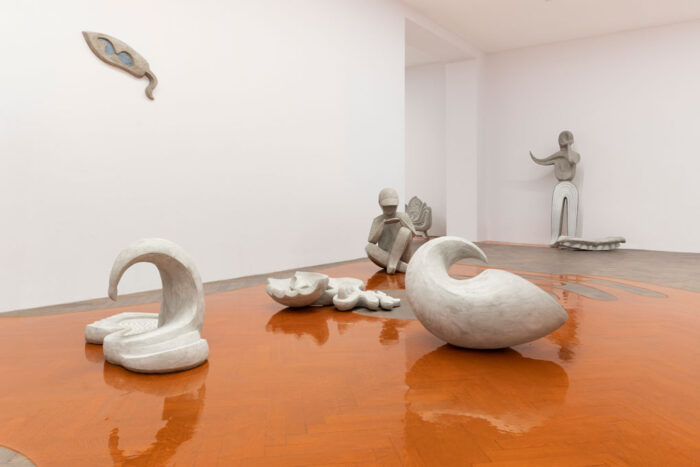
When looking at the installation, we can see how familiar and foreign motifs merge and create an alluring and eye-comforting scenery. Most of these monochrome objects are semi-figurative, as they depict often human-like beings devoid of binary features and with simplified, sharp-ended limbs. The artist undoubtedly is inspired by a range of iconographies belonging to vernacular craft traditions. Hulačová primarily uses concrete, combining it with her pencil drawings on metal plaques often attached to the heads of her characters. Her great acquaintance with the material can be recognized in how she manages to balance opposites, such as the apparent imperfection of the quasi-human body shapes, and the impression of subtlety of a solid material distributed over multiples. Any simplification cannot diminish the sculptures lightness as they seems to almost levitate in space. The chiaroscuro gained by their ductile cuts and refined edges is reminiscent of the sculptural tradition typical of the Soviet era and of its socialist modernist architecture. The artist interacts with the space by applying a bas-relief on the wall, as is in the case of the Microbes (2017–18) series, symbolically placed on the very same level of the viewer’s eye, to tell the story of tiny aquatic organisms which persevere in the most contaminated sewages, very harmful for humans.
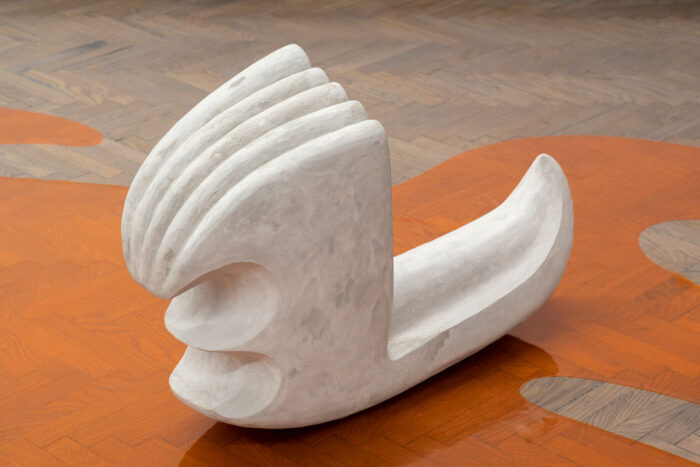
In the following room, a sculptural triptych directly referencing the title of the show Alienbees (2021) looks towards the viewer through some scaled quasi-insect-looking hollow eye sockets. Although their presence is essential for the biodiversity of the farmlands, in recent decades bees and other insect species have been severely affected by intensive agriculture. After the Velvet Revolution of 1989, in former Czechoslovakia and other countries in the proximity, the state-owned farming system collapsed, and individual farmers had to decide how to navigate the free market. Years later, as markets became more global, those who got competitive enough ended up as successful food suppliers, rather than live from hand to mouth. Meanwhile, in more recent years, sustainable agriculture emerged, apparently to bring nature back to the fore or to respond to consumer habits and demand for organic products. Still, non-human actors in the farmlands are being controlled and segregated in the extractivist project, despite bees and other insects responsible for pollinating most of the crop plants remain an important link for a large number of other living beings to persevere, humans included.
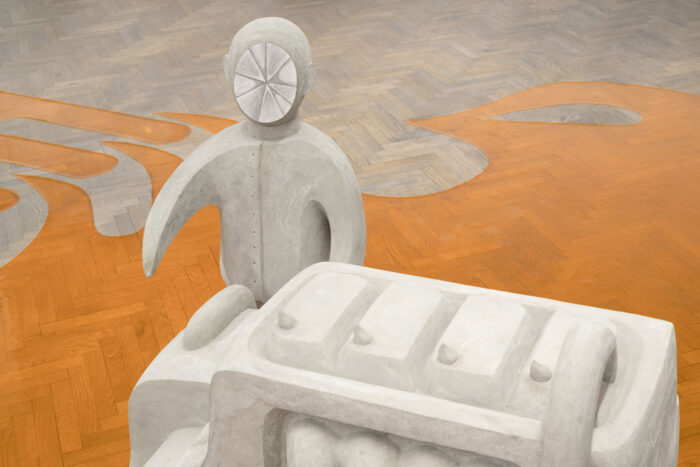
Anna Hulačová conveys stories from the countryside she had witnessed with her eyes, for instance, on how the population of insects has significantly visibly decreased throughout the years. Some years ago she moved to a village outside Prague, where the diffused use of pesticides caused radical changes to the environment. Intensive farming is surely quite the opposite of what Greek philosopher Theophrastus referred to as the necessity of building interspecies kinship, what Matthew Hall evokes in his book Plants as Persons. A Philosophical Botany as a “respectful form of farming, in which the cultivator engages in a partnership based on respect for the awareness and autonomy of the cultivated.” The fact that Hulačová’s sculptures are almost colorless, merging with the space surrounding them in a peculiar manner, makes them appear as frozen in time. Striking in their severity, we get to wonder whether they are part of a whole scenario of future landscapes.
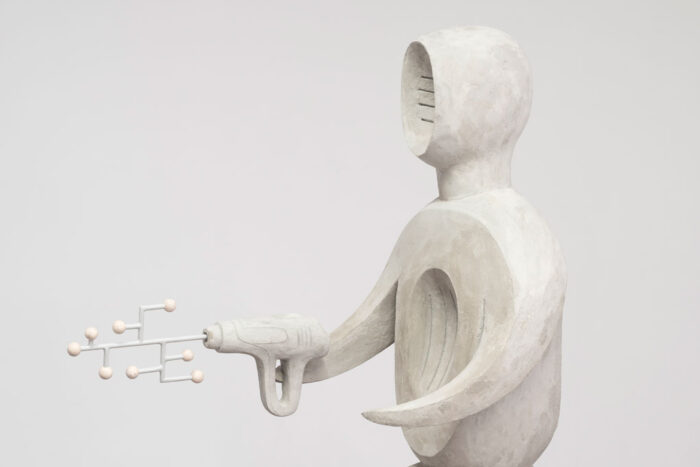
Another important reference is the cover of a specific issue of a Czech sci-fi magazine from the early 1990s, on which the artist remembered some alien-looking bees. Hulačová’s imaginary is situated somewhere in between utopia and dystopia, where beliefs and tendencies of the rural milieu that are built around collective intuitions or fears. We are left to choose whether to prefer to just witness or rather believe in these projections of a future which somehow is commencing right in front of us, carrying traces of a past.
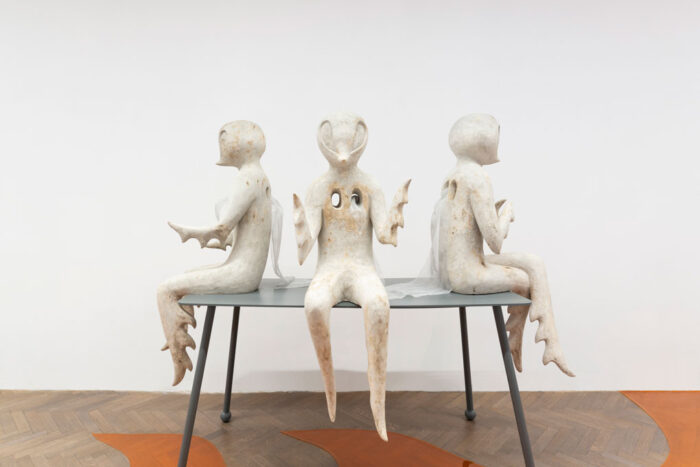
The artist seems to conduct this dialogue between past and present in order to reflect on the countryside as an autonomous ecosystem composed of a multitude of living creatures, along their robotic prostheses—rather than as a land to tame as subordinate to humans in the name of development, something that occurred after the war and lingered over the countries of the Eastern block for a quite long time. As today we stand in front of more complex socio-environmental issues like solastalgia, climate migration and deepening inequalities—we may have to think about rephrasing the exhibition title: Can the “alienbees” save us, please?




